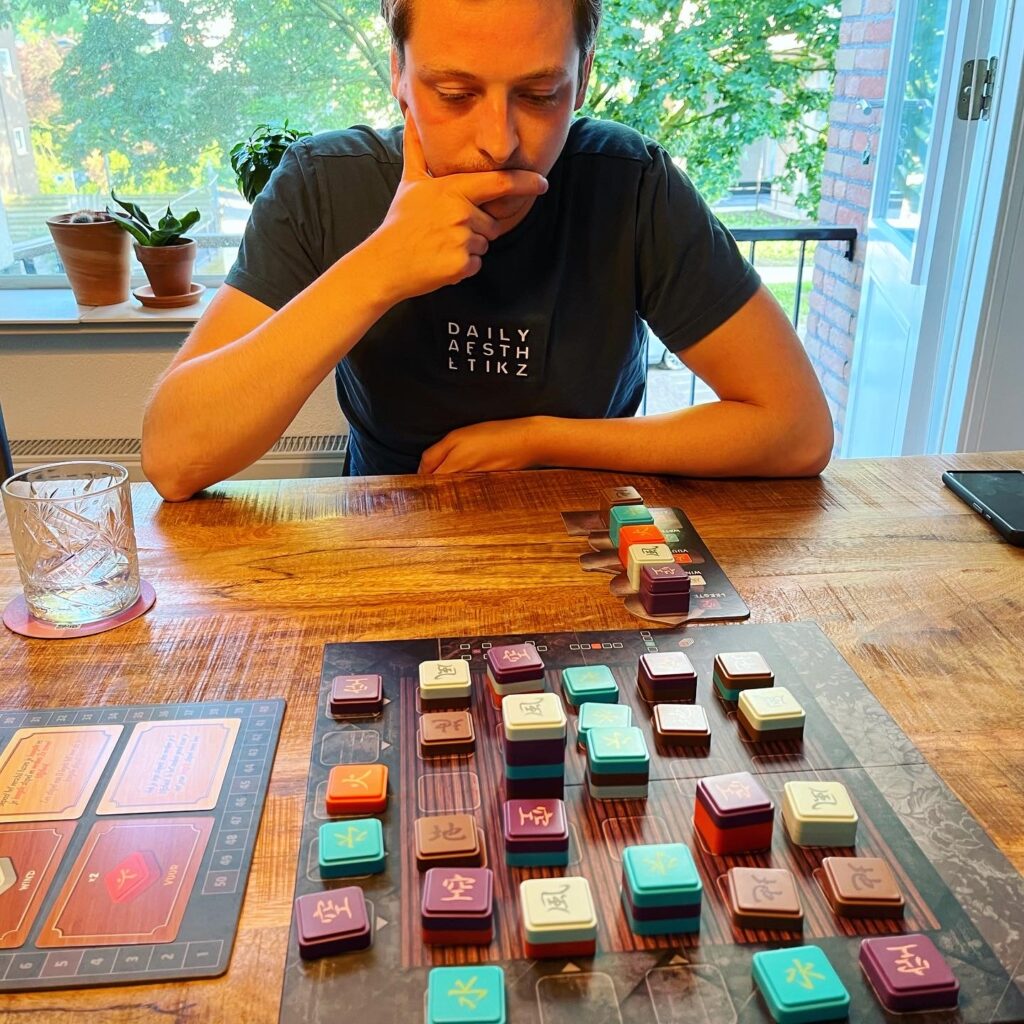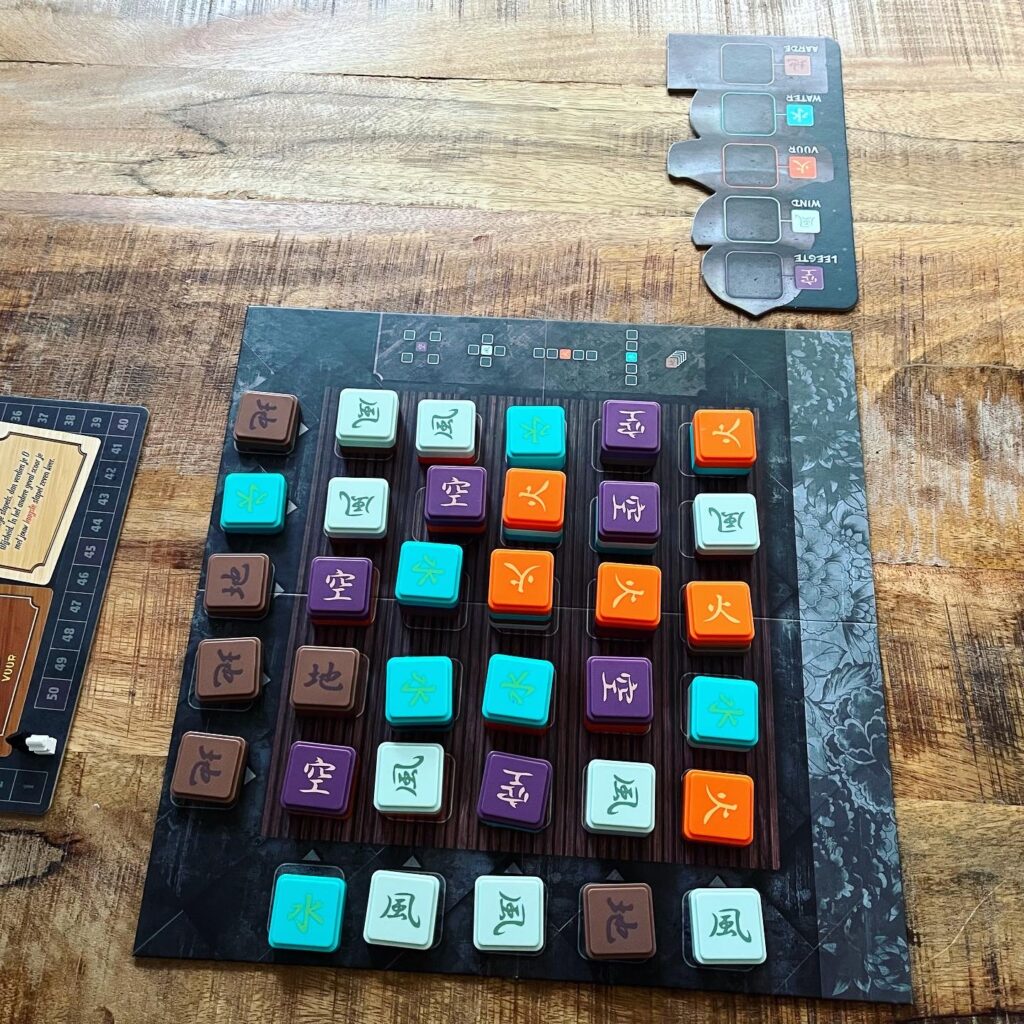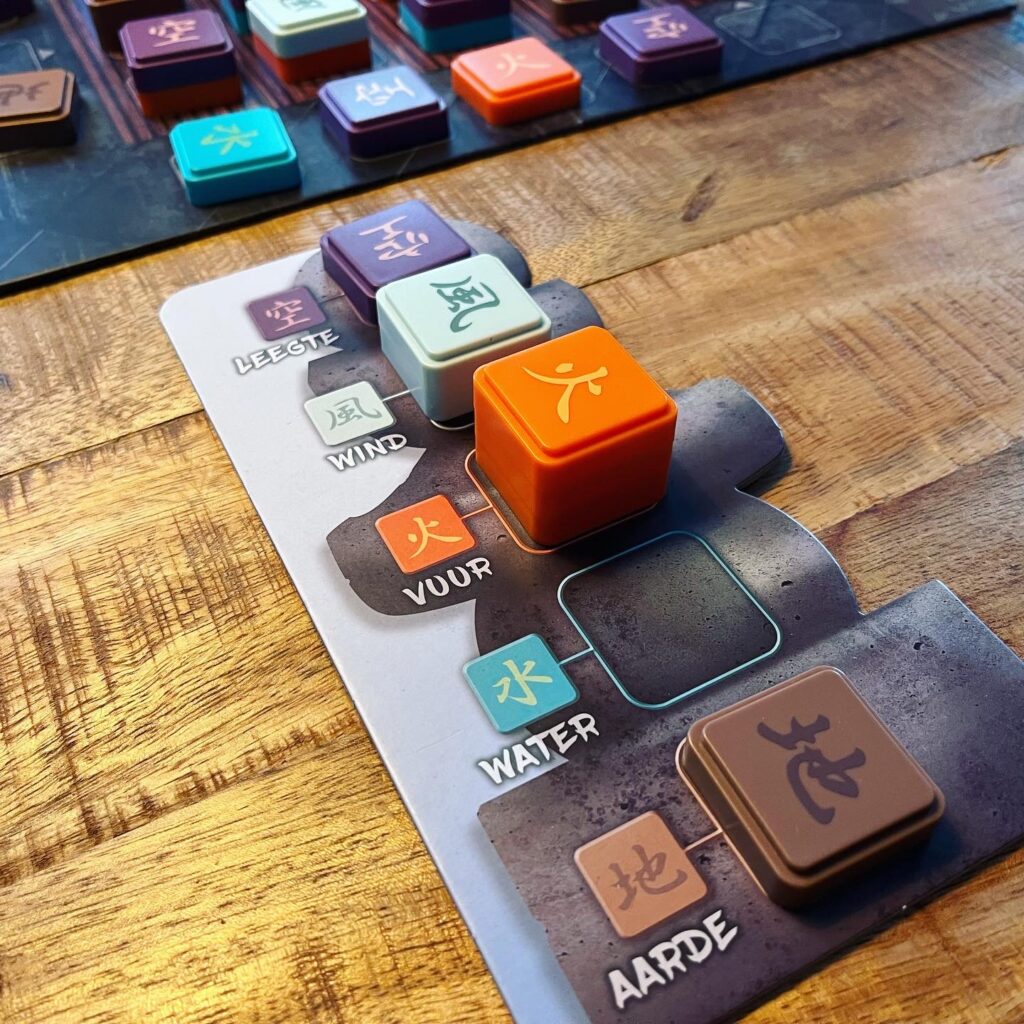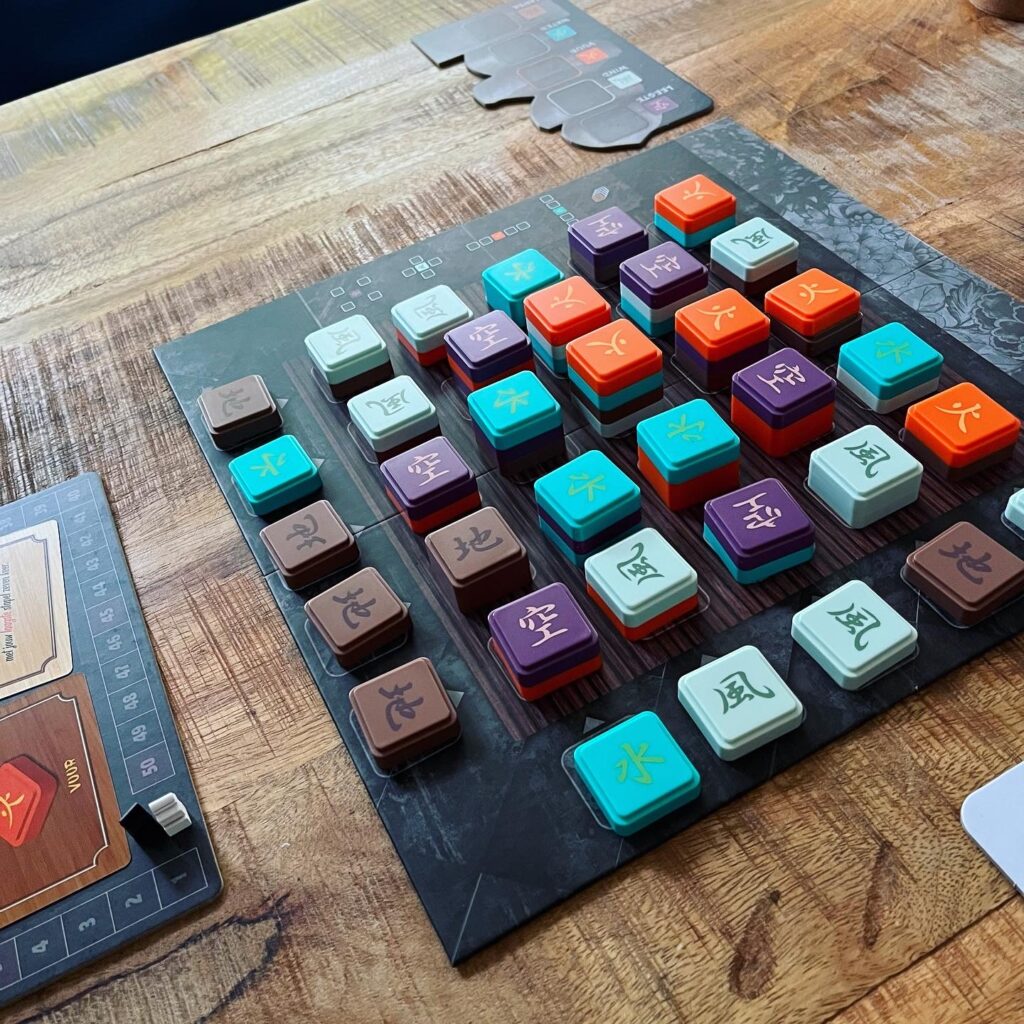A Gorintō is a Japanese Buddhist pagoda. Pagodas (tō in Japanese) are towering temples (often Buddhist temples) that are built in layers. A Gorintō, often built as a memorial, consists of five unique shapes that symbolise the Five Elements (Mahabhuta in Sanskrit, or Godai in Japanese). The elements and shapes are, from bottom to top, a cube symbolising earth, a sphere representing water, a pyramid symbolising fire, a crescent moon representing the sky, and a shape (often a tetrahedron or lotus flower) representing energy or emptiness. The Gorintō are often used at tombs or cemeteries and symbolise that in Japanese Buddhism one returns to the pure form of the elements after death. During one’s living existence, it is therefore important to gain understanding of the elements and to enrichen and live one’s life in wisdom. In the game Gorinto, players build towers, actually a kind of pagodas, by collecting element tiles. Are you the best at collecting understanding and wisdom, or will you fail to get a grip on the elements?

Gorinto is an abstract strategy game where players collect elements to build their towers. If a player collects more tiles of an element, this player has more understanding of the element in question and can make better use of it. The different elements are represented by coloured plastic tiles that can be easily stacked. Randomly, a number of tiles are drawn from the cloth bag and placed randomly in a pattern on the game board. This is the mountain. Next to the mountain is the path. Coloured tiles are also placed on the path. Each player also receives a Gorinto board where they can place their elements.

Next to the central game board is also a scoreboard. On this scoreboard, in addition to the score, players also keep track of the season (round) they are in. The game is played in four rounds. Additionally, on this board four cards are placed. Two goal cards that indicate how players can score at the end of each round and two elements that are still separate at the end of the game. So the goal cards determine how players can score during the game. The ways to score are diverse. An example of a goal card is scoring the difference between your highest and lowest stack.

Each turn, a player takes one of the tiles from the path and moves it in a straight line to one of the boxes or stacks on the mountain. Next, this player may take one or more (depending on his understanding) tiles. Which tiles a player can take depends on the element he just moved from the path. Each element has a corresponding pattern that allows the player to collect other tiles. If a player has more tiles of a certain element, the term increases and the player may take more tiles. The tiles are stacked on the players’ Gorinto as towers and score in the manner described earlier. At the end of a round, the path is replenished and players score points. The player with the most points at the end of the fourth season wins!

Gorinto is a challenging and varied abstract puzzle game with a high degree of (indirect) player interaction. Slowly the mountain is emptied by the players and players are limited by the scarcity of tiles on the path and the corresponding patterns. Players try to collect certain elements, but also have to keep in mind the different goals to score well. As I mentioned above, the ways to score are diverse and can sometimes even be a bit contradictory. This makes puzzling challenging, varied and entertaining. Every game you have a certain combination of goals, which makes the strategy different for every game. There are also different ways of starting the mountain, which also provides the necessary variation. The game also contains a solo mode in which you compete against the game while playing, as well as extra wild tiles. The game is easy to explain, simple to grasp, but difficult to master. In addition, the design is beautiful and colourful, and the Japanese theme is pleasantly incorporated. An elementary recommendation for lovers of abstract and interactive games!



